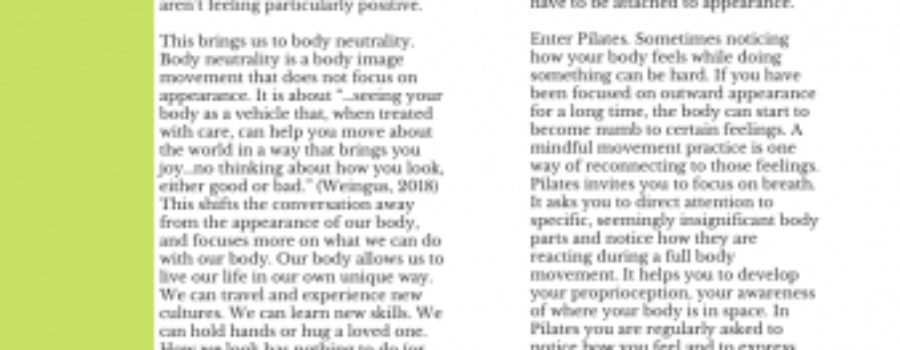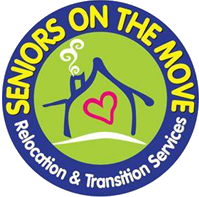Chances are you’ve heard about the concept of body positivity, of loving your body no matter what it looks like. Loving your size, owning your flaws, feeling confident and sexy, no matter what. Body positivity sounds great, and for some people it works well, but for many people who have struggled with their body image, body positivity feels too far out of reach. If you’ve spent much of your life feeling negative towards your body you can’t necessarily flip a switch and suddenly be in love with every inch of it. In fact, telling yourself you have to love all of your body through all of it’s changes (hormonal, illness, injury, aging, etc) can actually result in feeling guilty or stressed on those days when you aren’t feeling particularly positive.
This brings us to body neutrality. Body neutrality is a body image movement that does not focus on appearance. It is about “…seeing your body as a vehicle that, when treated with care, can help you move about the world in a way that brings you joy…no thinking about how you look, either good or bad.” (Weingus, 2018) This shifts the conversation away from the appearance of our body, and focuses more on what we can do with our body. Our body allows us to live our life in our own unique way. We can travel and experience new cultures. We can learn new skills. We can hold hands or hug a loved one. How we look has nothing to do (or should have nothing to do) with what we do day-to-day, what we can achieve in our life, and how we define ourselves. Body neutrality is a way to just be at peace with your body.
Practising body neutrality can have a number of benefits. If we think less about our body’s appearance, whether positive or negative, we have the time and energy to focus on other things. It frees up the mental energy to be present in our lives and truly enjoy the things we are experiencing. It can also encourage mindfulness, help to reduce anxiety and improve mood. So how do we practise (and it is an on-going practise!) body neutrality?
Start by exploring what feels good. As you go about your day try to notice how things make you feel, and how your body feels while you’re experiencing them. This could include food, creative expression, socializing, massage, sleep, and movement! If you are having a negative moment, try to focus on the things your body has helped you achieve or done for you that day. Maybe you acknowledge the strength of your legs that got you from point A to B. Maybe you express some gratitude to your heart for beating and your lungs for breathing. It will be different for every person because everyone’s body is different and is capable of achieving different things. Body neutrality does not mean that you are no longer interested in taking care of your body and your health, it simply means that these things do not have to be attached to appearance.
Enter Pilates. Sometimes noticing how your body feels while doing something can be hard. If you have been focused on outward appearance for a long time, the body can start to become numb to certain feelings. A mindful movement practice is one way of reconnecting to those feelings. Pilates invites you to focus on breath. It asks you to direct attention to specific, seemingly insignificant body parts and notice how they are reacting during a full body movement. It helps you to develop your proprioception, your awareness of where your body is in space. In Pilates you are regularly asked to notice how you feel and to express that to your teacher. It’s not always easy, but like so many things, practise can help! Pilates can also help to build that appreciation of what your body is capable of doing. There are so many modifications and tools to use that people of a wide variety of abilities can practise Pilates with success. Pilates can be a great tool to help you move towards body neutrality, if that happens to be a goal of yours.
 Back to myNiagaraOnline
Back to myNiagaraOnline
































